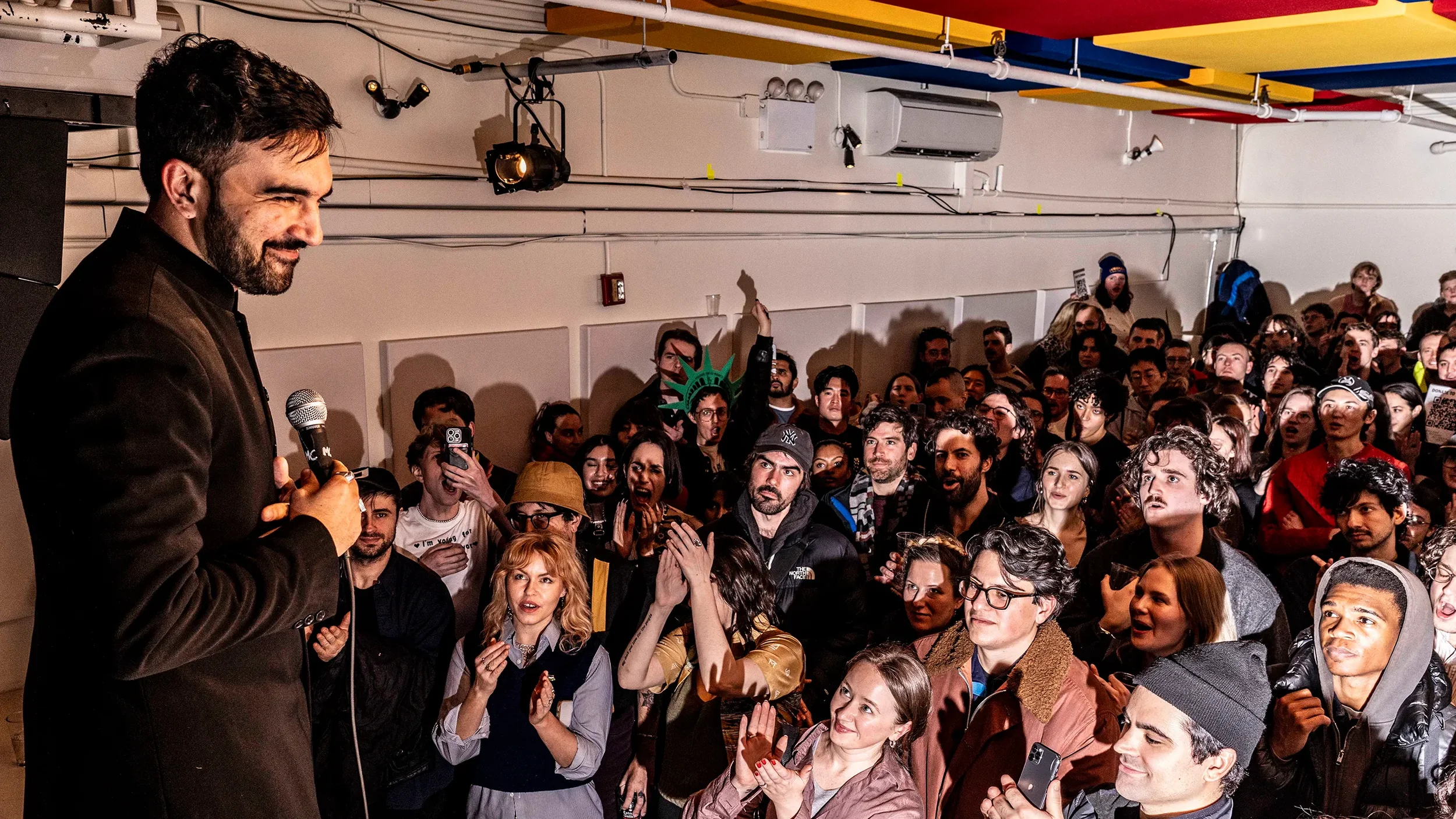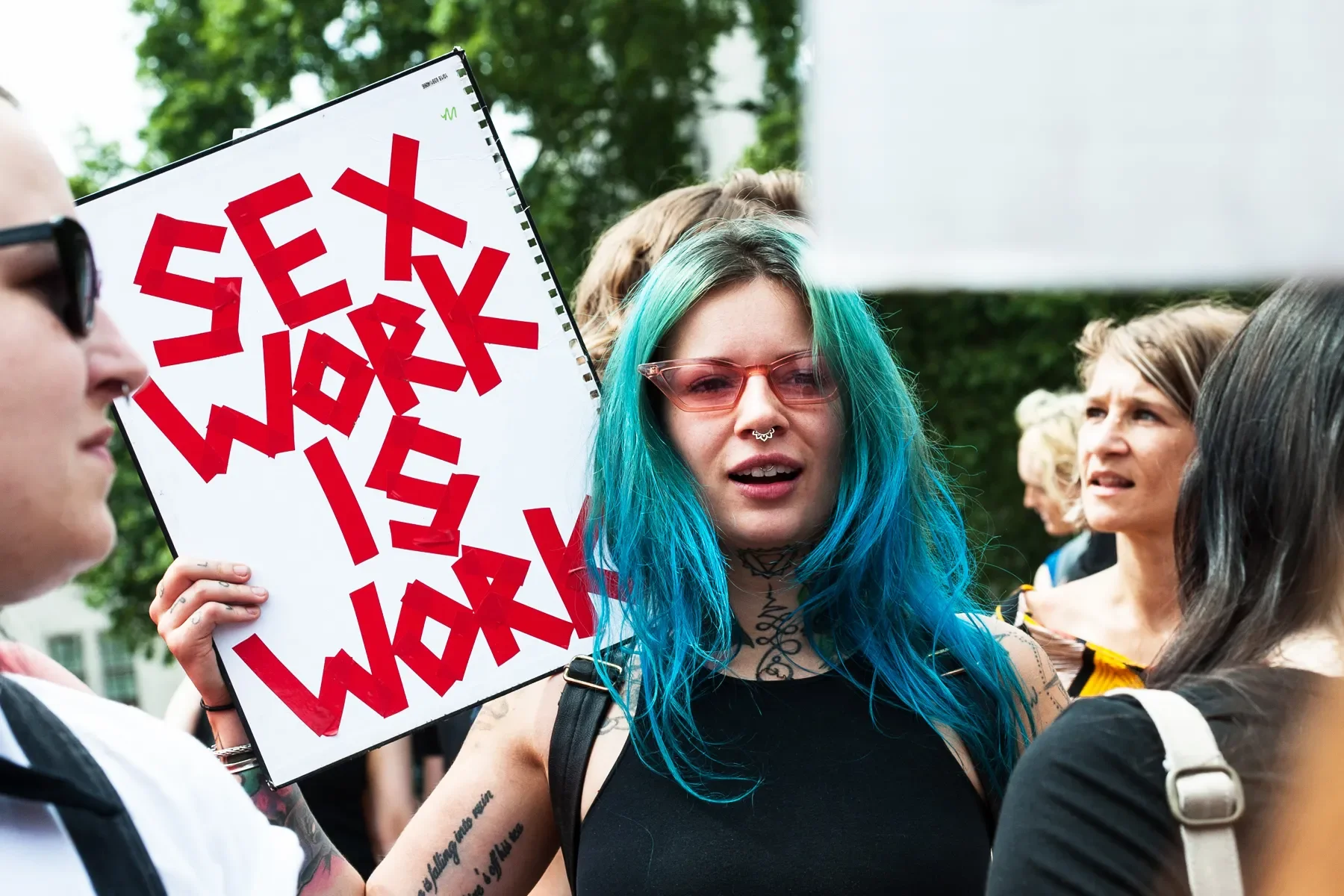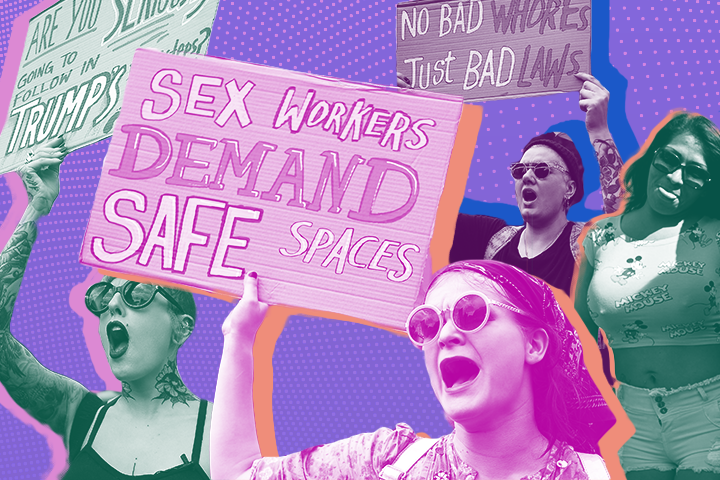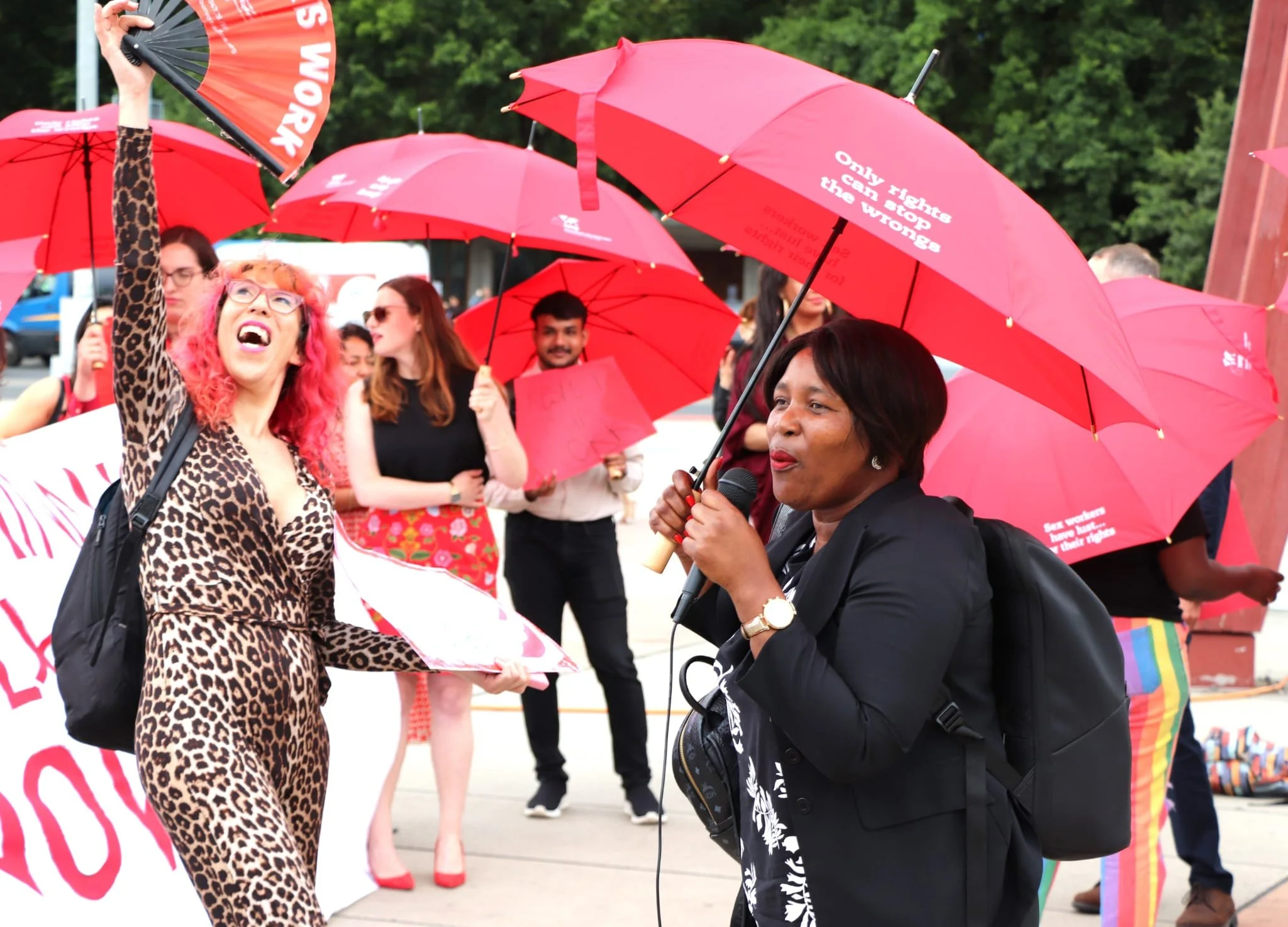Zohran Mamdani’s Promise, the Paradox of Faith, and the Path to Real Safety for Sex Workers
Empty promises or an actual path forward for Sex Workers in NYC?
When New York State Assemblyman Zohran Mamdani began calling for the full decriminalization of sex work, he reignited one of the city’s most polarizing debates. To some, his stance represents a long-overdue acknowledgment that sex workers deserve rights, dignity, and protection. To others, it’s a moral contradiction, a Muslim lawmaker advocating for a policy that seems to run counter to the moral teachings of his own faith.
But beneath the noise lies a more complex truth: Mamdani’s policy, while progressive in spirit, falls short in practice. It recognizes the harm of criminalization but fails to address the deeper structural realities that make sex work unsafe.
If New York City truly wants to make sex work safer, for those who choose it and those trapped within it, it needs more than slogans about decriminalization. It needs a worker-centered, safety-driven policy that balances compassion with accountability.
Mamdani’s Promises: A Vision of Decriminalization
Zohran Mamdani has positioned himself as a champion of marginalized communities, and his stance on sex work follows this line. His core promises include:
Full decriminalization of consensual adult sex work through support for legislation like Cecilia’s Law (the Stop Violence in the Sex Trade Act).
Ending NYPD vice raids and shifting enforcement focus toward traffickers and violent offenders.
Reducing stigma so sex workers can access healthcare and report crimes without fear.
Reinvesting millions in victim services — including housing and healthcare programs for those exploited or seeking to exit the trade.
His intent is noble: stop punishing the vulnerable and start protecting them. Yet, by focusing narrowly on decriminalization as the solution, Mamdani’s policy leaves unaddressed many of the social, economic, and ethical dimensions of the sex trade.
The Faith Paradox: When Justice Meets Theology
For many Muslims, Mamdani’s position raises a deeper question: Can a Muslim leader support a policy that normalizes something Islam forbids?
In Islamic ethics, sex outside of marriage (zina) is strictly prohibited, and prostitution is explicitly condemned. The Qur’an calls believers to uphold chastity and warns against commodifying intimacy. Religious leaders point to this moral foundation as incompatible with decriminalization.
From that view, Mamdani’s stance looks like a betrayal. A Muslim secularizing sin.
But there’s another perspective: Islamic compassion. The same scripture that forbids zina also commands mercy, dignity, and justice for the oppressed. If criminalization causes more harm than good, leading to violence, exploitation, and homelessness, then protecting sex workers’ lives may align more closely with rahmah (mercy) than punishment does.
Mamdani walks this line: separating personal faith from public ethics. His policy reflects the belief that law should prevent harm, not enforce morality. Yet this balancing act has left him politically isolated, criticized by conservatives for hypocrisy and by advocates for vagueness.
Where His Policy Falls Short
Despite its intentions, Mamdani’s approach to sex work fails to fully deliver safety. The problem isn’t the goal — it’s the gaps in execution.
1. Decriminalization Without Structure
Decriminalization removes criminal penalties but doesn’t automatically provide healthcare, labor protections, or safe workplaces. Workers still face exploitation if third parties like landlords, managers, or corporations are unregulated.
Without a clear framework, power shifts from police to private profit, and vulnerable workers remain at risk. This also presents increasing costs to regulate and prevent capitalists from commoditizing sex and being the ones to win big if legalization moves forward.
2. No Plan for Oversight or Worker Voice
Mamdani’s proposal says little about how to prevent coercion, trafficking, or unsafe working conditions. There’s no mention of inspections, safety standards, or worker-led co-ops, mechanisms that could prevent abuse while preserving autonomy.
3. Risk of Corporate Exploitation
If the trade is decriminalized without guardrails, companies could commercialize sex work, turning human intimacy into a corporate commodity. As seen in Germany and Australia, “mega-brothels” and corporate operators can recreate the same coercion that decriminalization was meant to eliminate.
4. Moral & Political Backlash
By framing the debate around legality rather than safety, Mamdani has given opponents from religious conservatives to neighborhood associations a moral cudgel. The conversation has shifted from “protecting workers” to “legalizing vice,” undermining broader public support.
What’s Really Needed: A New York City Safety Plan
New York doesn’t need to wait for Albany to act. Much of what truly makes sex work safer can be achieved locally — through smarter policing, healthcare, and community partnerships. Here’s what that looks like.
1. End Harmful Enforcement Practices
A unified NYPD directive banning vice stings and pretext arrests for consensual adult sex.
A borough-wide decline-to-prosecute agreement among district attorneys for adult prostitution-related charges.
A “safe reporting” policy guaranteeing that sex workers can report assault or trafficking without fear of arrest.
2. Create Worker-Centered Health and Safety Networks
Expand city sexual-health clinics and mobile units to offer evening hours, mental-health care, and free STI testing.
Fund peer-led outreach groups that distribute safety kits, run hotlines, and maintain “bad date” lists.
Develop voluntary “safe space” certification standards for indoor venues, focusing on panic buttons, no lock-ins, and posted rights.
3. Protect Privacy and Autonomy
Launch a privacy-protected city portal for reporting violence and screening clients — built with encryption to comply with federal FOSTA-SESTA limits.
Guarantee privacy protections for workers seeking ID changes or record expungement.
4. Economic and Housing Stability
Provide rapid rehousing and flexible income stipends for those exiting coercive or unsafe situations.
Support worker-owned cooperatives that handle booking, safety, and security collectively, keeping power in the hands of workers, not corporations.
5. Measure Success Transparently
Publish quarterly data on assaults, clinic usage, and trafficking cases.
Commission CUNY or Columbia to independently evaluate outcomes after two years — focusing on reductions in violence, improved reporting, and public health gains.
How Mamdani Can Evolve His Vision
Zohran Mamdani’s vision doesn’t need to be abandoned — it needs to grow. To truly align with his principles of justice, equity, and harm reduction, he should:
Shift from “legalization” language to “safety and dignity” language.
Frame the reform around protecting human life and autonomy, not around normalizing the trade.Support worker-led, not company-led, structures.
Encourage cooperative ownership models and ban exploitative corporate control.Pair decriminalization with clear labor, health, and housing reforms.
This turns a legal change into a social justice program.Acknowledge the moral complexity.
Show that compassion, a core Islamic and civic value, is at the heart of reform, not contradiction to faith.
What would increasing safety in NYC look like for SWers? Here’s a NYC Sex-Worker Safety Plan and Roadmap for how to make the trade work.
North Star & Guardrails
Goal: reduce violence, coercion, and STI/HIV risk; increase reporting and access to care; separate consensual sex work from trafficking.
Do no harm: nothing here criminalizes workers; trafficking & child exploitation remain fully enforced.
Reality check: federal FOSTA-SESTA still constrains online safety tools; plan includes city workarounds and advocacy.
Policy 1. Policing & Prosecution
1.1 Issue a unified NYPD directive
Prohibit vice stings targeting consensual adult activity; focus vice on trafficking, assault, extortion, and child exploitation.
Ban “pretext” detentions for adjacent nuisances (trespass, disorderly) when the apparent purpose is to coerce workers.
Require body-worn camera activation and supervisor sign-off for any operation at indoor venues.
1.2 Citywide DAs compact
Formalize a borough-wide decline-to-prosecute (DNP) agreement for adult prostitution & unlicensed massage, mirroring Manhattan’s 2021 policy, plus automatic dismissal/expungement pathways.
1.3 “Safe-reporting” Protocol
NYPD + ENDGBV + Law Dept: written policy that victims/witnesses reporting robbery, assault, or trafficking will not face prostitution-related arrest; multilingual public notice; tracking in CompStat-style dashboards.
1.4 Replace Vice with an Anti-Trafficking & Violence Unit
Train on coercion indicators, debt bondage, labor violations; embed social workers and interpreters.
Policy 2. Health & harm-reduction
2.1 DOHMH “Red Umbrella” clinic hours
Extend evening/weekend STI, PEP/PrEP, wound care, and on-site mental-health hours at 4 sexual health clinics; add mobile units at known hotspots.
2.2 Peer-led outreach contracts
Fund worker-led orgs to deliver condoms, testing, bad-date lists, and safety training; build community empowerment (evidence-based reduction in violence/HIV).
2.3 Confidential survivor services
ENDGBV to add a dedicated line for sex workers (with immigration-safe referrals), and fast-track emergency housing vouchers for people exiting coercive situations.
Policy 3. Civil/legal Support
3.1 City-funded expungement & warrants clinics
Stand up quarterly clinics with Legal Aid/ACD for old prostitution and “Walking While Trans” related cases; proactive outreach to those dismissed in 2021.
3.2 ID & records protection
Create a municipal “name & gender change navigator” and sealed-records assistance so victims can pass background checks for housing and jobs.
Policy 4. Safety in the Workplace
4.1 Safe-space standards (non-regulatory)
Voluntary certification for indoor workplaces (panic buttons, cameras covering entrances only, condom availability, no lock-ins, posted worker rights). Participating venues get priority inspections relief and mediation access.
4.2 NYC Good-Samaritan-style ordinance
Protect workers/clients who call 911 to report an assault/overdose from arrest for prostitution-only conduct (mirrors overdose Good-Samaritan logic).
4.3 Co-working & security cooperatives
SBS to pilot grants for worker-owned co-ops providing booking, screening, and licensed security as shared services (keeps power with workers, not corporate managers).
Policy 5. Digital Safety & FOSTA Workaround
5.1 City-hosted safety tools
Create a privacy-preserving screening & bad-date reporting portal run by DOITT/DOHMH with strict data minimization and opt-in encryption; legal review to avoid “promotion” risks under FOSTA.
Offer micro-grants to peer networks to maintain distributed, worker-controlled lists.
5.2 Platform MOUs
Voluntary agreements with rideshare, payments, and housing platforms to allow anonymous block/report features relevant to sex-worker safety without content flagging that triggers account bans.
Policy 6. Housing & Economic Alternatives
6.1 Rapid rehousing slots for people exiting coercion; add flexible “bridge” stipends for 6–9 months.
6.2 Guaranteed Income pilot (400 participants) for high-risk individuals (youth/formerly trafficked/TGNC), evaluated for violence & health outcomes.
Policy 7. Community Relations & Nuisance Reduction
7.1 Problem-solving teams (NYPD + Sanitation + Mediation) to handle street-level hotspots with lighting, trash pickup, and non-police outreach before enforcement.
7.2 Clear rules against harassment of workers by residents/businesses; prioritize mediation and civil remedies.
Policy 8. Measurement & Public Transparency
Quarterly dashboard: assaults against sex workers reported; case dispositions; 911 response times; clinic uptake; housing placements; trafficking prosecutions (not arrests).
Independent evaluator (CUNY/Columbia) to run a 2-year impact study.
Publish a civilian oversight report on NYPD compliance with the directive.
Budgets & Owners
NYPD training & unit refocus: $3–5M (reallocated from vice operations).
DOHMH clinics & mobile units: $10–12M.
Peer-led contracts & legal clinics: $6–8M.
Housing & income pilots: $18–22M.
Digital tools & data team: $2–3M.
Total: ~$40–50M (mix of reprogrammed funds + federal HIV/violence grants).
Why this makes sense for NYC now:
Arrests/prosecutions already scaled back (esp. Manhattan since 2021), so formalizing DNP citywide and shifting vice resources is feasible.
“Walking While Trans” repeal removed a key harassment lever; the plan closes remaining gaps (pretext charges, lack of safe reporting).
Health bodies (WHO/UNAIDS) recommend de-penalization + community empowerment to cut violence and HIV risk; the plan operationalizes that locally.
FOSTA-SESTA still limits online safety; city-run, privacy-preserving tools and legal vetting can restore some screening capacity without platform liability triggers.
The Real Path Forward
New York has already proven that reducing criminalization makes sex work safer. But decriminalization alone isn’t enough. Without structure, regulation, and social investment, it risks swapping police control for corporate exploitation.
What’s needed now is a New York City model: pragmatic, compassionate, worker-driven, and rooted in public health. A model that protects the right to safety, not just the right to sell sex.
If Mamdani can evolve his policy to reflect that, he could turn controversy into leadership and finally make New York the city that treats sex workers not as criminals, not as commodities, but as human beings deserving safety, dignity, and choice.





